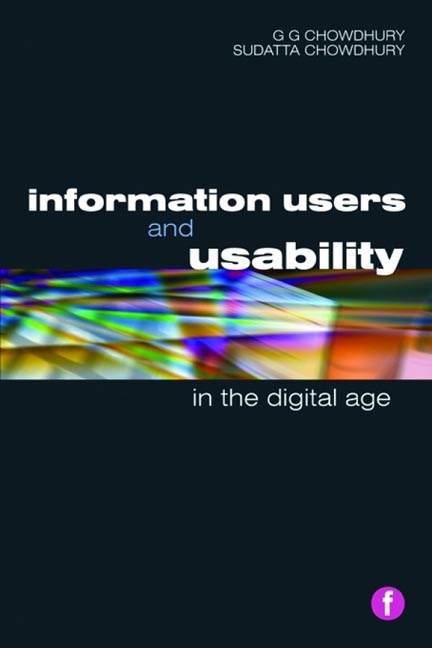Book contents
- Frontmatter
- Contents
- Preface
- Figures and tables
- 1 Introduction
- 2 Information needs and user studies
- 3 Human information behaviour studies and models
- 4 Usability study basics
- 5 Usability study participants
- 6 Usability data analysis
- 7 Web usability
- 8 The usability of digital libraries
- 9 The digital divide, digital natives and usability
- 10 Issues and trends in usability research
- Index
4 - Usability study basics
Published online by Cambridge University Press: 09 June 2018
- Frontmatter
- Contents
- Preface
- Figures and tables
- 1 Introduction
- 2 Information needs and user studies
- 3 Human information behaviour studies and models
- 4 Usability study basics
- 5 Usability study participants
- 6 Usability data analysis
- 7 Web usability
- 8 The usability of digital libraries
- 9 The digital divide, digital natives and usability
- 10 Issues and trends in usability research
- Index
Summary
Introduction
As discussed in Chapter 1, usability is a quality attribute of information services and products. Usability research aims to gather data on how a particular information service or product is used and perceived by users, how far the given product or service meets its stated objectives, where users find difficulties in using the product or service, if any, and so on. Usability studies may be conducted at different stages of the lifecycle of an information product or service. At the design stage data relating to the anticipated or expected uses of a specific information service or product can be gathered through a usability study. More usability information relating to how far an information product or service meets its stated goals can be gathered after development of the prototype but before implementation. Again usability information has to be gathered at different intervals when the product is on the market in order to gather data on the usage patterns and user perceptions about the strengths and weaknesses of the given information product or service. In summary, usability studies need to be conducted throughout the lifecycle and different information is gathered to help improve the product or service and to remain effective and competitive in the marketplace. This chapter discusses the concept of usability in more detail and how to conduct a usability study at different stages of a product lifecycle, including various approaches, tools and techniques.
Usability
The definition of usability provided in ISO 9241-11:1998, mentioned in Chapter 1, emphasizes that usability is a measure of the extent to which a given product can be used by specified users to achieve some specified goals. It also reminds us that users should be able to use the given product with effectiveness, efficiency and satisfaction in a specified context of use. This definition therefore suggests that to measure usability, we need to:
• identify a subset of the specified set of users and involve them in the study, and then
• study the selected participants’ context and goals for which they are going to use the product
- Type
- Chapter
- Information
- Information Users and Usability in the Digital Age , pp. 85 - 108Publisher: FacetPrint publication year: 2011



